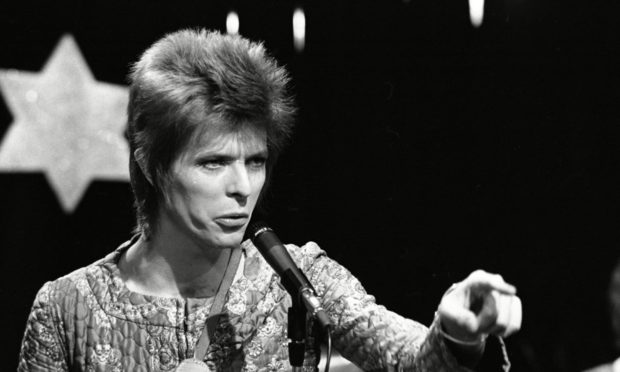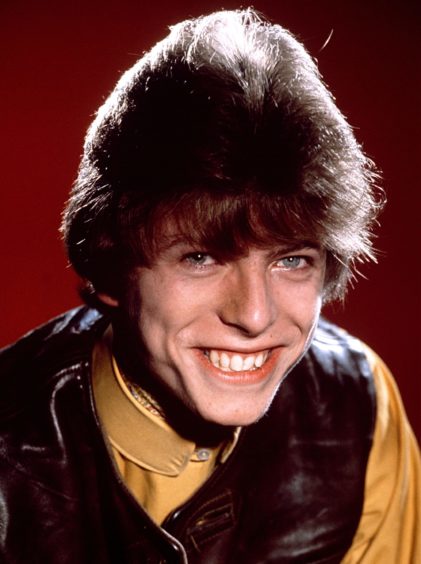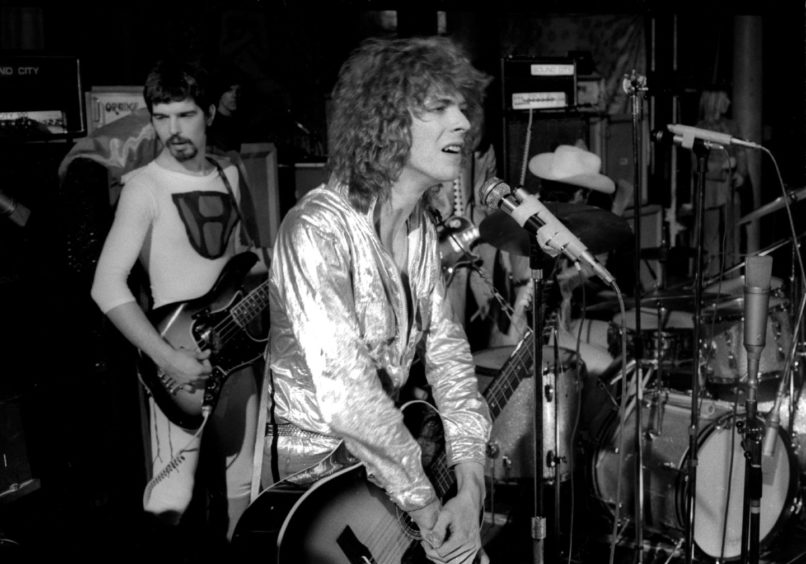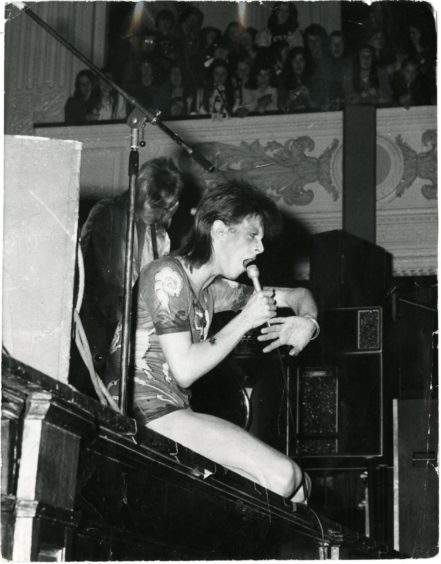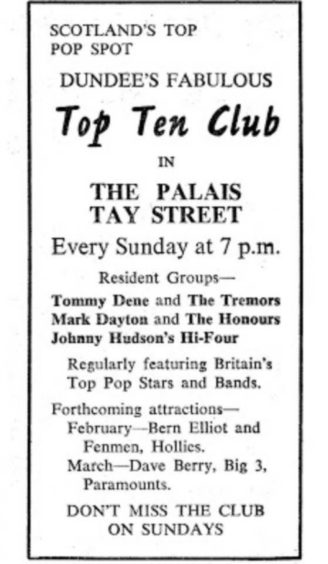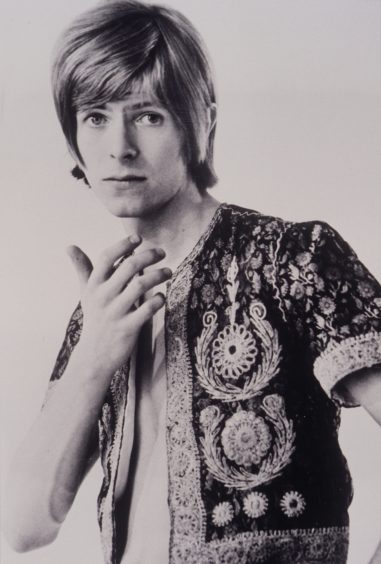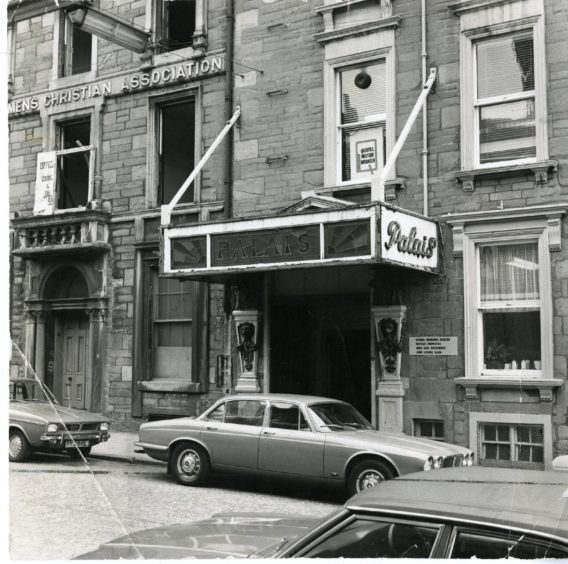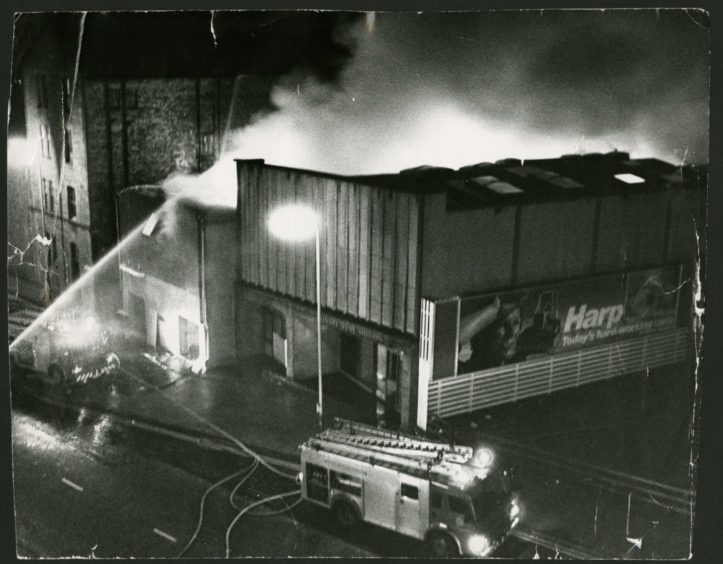David Bowie was cast adrift like lone astronaut Major Tom when he performed his first gig in Dundee 55 years ago.
The show at the Top Ten Club on April 3 1966 was sparsely attended despite the venue at that time being known as “Scotland’s top pop spot”.
Andi Lothian started the club in 1962, which ran for six years every Sunday once a week from the Palais, and it garnered a reputation as the place to see top chart stars.
Andi was also a showbiz agent and promoter in the 1960s who worked with The Beatles, Jimi Hendrix, Eric Clapton and the Rolling Stones.
Bowie and the Buzz performed
Andi Lothian booked Bowie to play a Sunday night gig at the Top Ten Club after hearing him on Radio Luxembourg performing with backing band The Lower Third.
The Lower Third then went on to split from Bowie over financial disagreements regarding “who was being paid what” with manager Ralph Horton.
Bowie formed the Buzz quickly in February 1966 and performed at the Top Ten Club before a few hundred fans.
“There was probably a less than normal crowd at the Top Ten Club when Bowie first appeared back in April 1966,” said Mr Lothian.
“I was regularly listening to pre-release records on Radio Luxembourg, making a judgement on whether they were going to be a hit before booking the groups for a Scottish tour.
“My ear was really tuned in to finding hits, and in bringing groups up to tour Scotland, the key date for me was always the Top Ten Club at the Palais.
“It was usually about four or five weeks after I had booked the group and the record had been released that the Scottish tour began.
“My aim was to have the group touring Scotland with the record at least showing in the Top Ten, which it often was, when they performed at the Palais.
“For instance the Bee Gees is a good example because they were virtually unknown when I booked them and were Number 1 when they played both the Top Ten in Dundee and the Reid Hall in Forfar.
“So the fact that David Bowie did nothing was a real puzzle!”
Mr Lothian was disappointed with the poor attendance but he never stopped believing that Bowie would make it to the top.
In December 1966, Bowie left the Buzz to become a solo act.
After the commercial failure of his 1967 debut album, Bowie didn’t release anything in 1968.
Bowie continued to do some recording, radio sessions, and quite a bit of writing.
He acquired a new manager, Kenneth Pitt, who commissioned a promotional film in hopes of widening the artist’s audience.
For the film, Bowie wrote Space Oddity, a tale about a fictional astronaut, cutting multiple demos, which helped secure a one-album recording deal with Mercury.
Caird Hall date cancelled due to poor ticket sales
Mr Lothian heard the early demo in 1969 and was so impressed that he put together a package to bring Bowie back to Scotland for a week-long tour.
Bowie was riding high in the charts with Space Oddity by the time the gigs came around and he was called ‘The Human Oddity’ in the tour poster.
The short tour opened at the Salutation Hotel in Perth and was followed by dates in Kilmarnock, Dunfermline, Glasgow, Kirkcaldy and Edinburgh, coinciding with the release of his second studio album, titled David Bowie.
The shows were not well attended.
Mr Lothian was struck by misfortune again as shows in Stirling, Aberdeen, Hamilton and Dundee were cancelled due to poor ticket sales.
The Top Ten Club also closed in the very late 1960s and Mr Lothian had to watch a successful business go into liquidation as crowds dried up.
“Colour television was at the root of the decline,” he said.
“People were staying in on a Sunday night and things started to slow down which would eventually lead to the loss of the company.
“I was so upset that I burned all of my records and gig posters!
“Everything I had went up in smoke.”
Mr Lothian continued to follow Bowie’s career before 1972’s The Rise And Fall Of Ziggy Stardust And The Spiders From Mars made him an international star.
Fans then queued overnight for tickets when Bowie returned to perform in Dundee on May 17 1973 for what would become Ziggy Stardust’s farewell tour.
Bowie was mobbed by fans after Dundee gig
The 2,500 sell-out crowd at the Caird Hall audience was restrained until the last few songs when they surged forward and hundreds pressed against the stage.
That exuberance spilled over after the concert and Bowie found himself trapped at his car and had to be dragged to safety by his bodyguard Stuey George.
Mr Lothian: “When Bowie finally shot to Number 1 I felt vindicated!
“Bowie was unique and phenomenally creative until the day he died.
“He was a superstar.
“I felt that Space Oddity was going to launch an amazing career and life for Bowie.
“I certainly would have had no idea just how amazing.”
By the time Bowie came to record his Young Americans album in 1975, he was so big that his own heroes were lining up to meet him.
Bruce Springsteen dropped by the studio to witness Bowie’s transformation as he entered his soul era and Bowie counted John Lennon and Yoko Ono as mates.
Lennon let Bowie do a very different version of his Beatles classic Across The Universe and then co-wrote Fame with Bowie and guitarist Carlos Alomar.
The 1980s saw him combine his pop career with appearances in films including Merry Christmas, Mr Lawrence and Absolute Beginners.
But he could still have huge hits, for instance with Dancing In The Street alongside Mick Jagger, or Under Pressure, with Queen.
He also tried being just a member of a band again, stressing that he was just the singer and rhythm guitarist in Tin Machine.
Inducted into the Rock and Roll Hall of Fame in 1996, Bowie delivered another strong album with Earthling the following year.
He was also delighted to have signed up to star at T In The Park in 2004.
Sadly, it was not to be due to a shoulder injury.
The Darkness, who were second on the bill, took Bowie’s headline slot.
After suffering a heart attack, ill health forced Bowie to retreat from public life.
Bowie inspired generations during his career
Bowie made a surprise comeback in 2013 when he suddenly released a new single on his 66th birthday with an album out just weeks later, his first for 10 years.
He released his final album, Blackstar, just three days before he died aged 69 on January 10 2016 after battling cancer for 18 months.
Dundee-born DJ and broadcaster Jim Gellatly said Bowie inspired generations during a career spanning six decades.
He said: “I guess seeing Bowie in the 60s would have been rather underwhelming at the time, but a great one to tell folk about now!
“The Ziggy period would have been something else though as it was a seminal time in his career.
“I, like many was gutted he never played T in the Park.
“Much as I like The Darkness, it wasn’t quite the same.
“I was lucky enough to see him at Ingliston on the Sound and Vision Tour in 1990 though.
“It was pretty much a greatest hits package so probably not as special as seeing Ziggy.
“Bowie had a huge impact on contemporary music and his legacy remains as strong as ever.”
What became of the Palais?
Dundee had never known such a dancing boom after the Palais opened in the 1920s and crowds streamed up South Tay Street for tea dances.
In the 1960s some of the UK’s top pop stars and bands regularly appeared at the venue following the opening of the Top Ten Club.
The first show at the Top Ten Club took place on October 14 1962, with guest stars on the opening night Emile Ford and the Checkmates, Robby Hood and his Merrie Men, Johnny Washington, Johnny Hudson and the Hi-Four, and Clint and the Tornadoes.
Maurice Gibb and Lulu
The Bee Gees performed at the venue in 1967 and played songs such as Massachusetts and To Love Somebody.
It was also the gig that played a part in the early romance between Maurice Gibb and Lulu.
Gibb invited Lulu’s brother Billy to the Dundee show during their early courtship and he was “bowled over” and told his friends that night that “whatever happened” he was going to marry Lulu.
The Palais eventually closed and became Samantha’s, then Bloomers, before burning to the ground in 1980.
Fire broke out shortly before 11pm on February 20 1980 but attempts to save the building were in vain.
Sparks and glowing cinders soared into the sky as it plunged to the ground.
Units from all Dundee stations, Broughty Ferry, Monifieth and Carnoustie attended the blaze.
